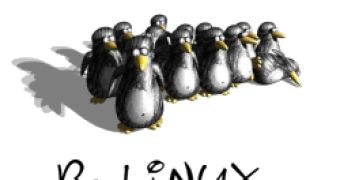Linux commands are still and they will always be very useful in a Linux system. I will try to list here, for linux beginners, some of the most important console commands:
Starting & Stopping
shutdown -h now - Shutdown the system now and do not reboot.
halt - Stop all processes - same as above.
shutdown -r 5 - Shutdown the system in 5 minutes and reboot.
shutdown -r now - Shutdown the system now and reboot.
reboot - Stop all processes and then reboot - as above.
startx - Start the X system.
Accessing & mounting file systems
mount -t iso9660 /dev/cdrom /mnt/cdrom - Mount the device cdrom and call it cdrom under the /mnt directory.
mount -t msdos /dev/hdd /mnt/ddrive - Mount hard disk "d" as a msdos file system and call it ddrive under the /mnt directory.
mount -t vfat /dev/hda1 /mnt/cdrive - Mount hard disk "a" as a VFAT file system and call it cdrive under the /mnt directory.
umount /mnt/cdrom - Unmount the cdrom
Finding files and text within files
find / -name fname - Starting with the root directory, look for the file called fname.
find / -name "*fname*" - Starting with the root directory, look for the file containing the string fname
locate missingfilename - Find a file called missingfilename using the locate command - this assumes you have already used the command updatedb (see next).
updatedb - Create or update the database of files on all file systems attached to the linux root directory.
which missingfilename - Show the subdirectory containing the executable file called missingfilename.
grep textstringtofind - Starting with the directory called dir, /dir look for and list all files containing textstringtofind.
Moving, copying, deleting & viewing files
ls -l - List files in current directory using long format.
ls -F - List files in current directory and indicate the file type.
ls -laC - List all files in current directory in long format and display in columns.
rm name - Remove a file or directory called name.
rm -rf name - Kill off an entire directory and all that includes files and subdirectories.
cp filename /home/dirname - Copy the file called filename to the /home/dirname directory.
mv filename /home/dirname - Move the file called filename to the /home/dirname directory.
cat filetoview - Display the file called filetoview.
man -k keyword - Display man pages containing keyword.
more filetoview - Display the file called filetoview one page at a time, proceed to next page using the spacebar.
head filetoview - Display the first 10 lines of the file called filetoview.
head -20 filetoview - Display the first 20 lines of the file called filetoview.
tail filetoview - Display the last 10 lines of the file called filetoview.
tail -20 filetoview - Display the last 20 lines of the file called filetoview.
Installing software for Linux
rpm -ihv name.rpm - Install the rpm package called name.
rpm -Uhv name.rpm - Upgrade the rpm package called name.
rpm -e package - Delete the rpm package called package.
rpm -l package - List the files in the package called package.
rpm -ql package - List the files and state the installed version of the package called package.
rpm -i --force package - Reinstall the rpm package called package having deleted parts of it (not deleting using rpm -e).
tar -zxvf archive.tar.gz or tar -zxvf archive.tgz - Decompress the files contained in the zipped and tarred archive called archive
./configure - Execute the script preparing the installed files for compiling.
User Administration
adduser accountname - Create a new user call accountname.
passwd accountname - Give accountname a new password.
su - Log in as superuser from current login.
exit - Stop being superuser and revert to normal user.

 14 DAY TRIAL //
14 DAY TRIAL //